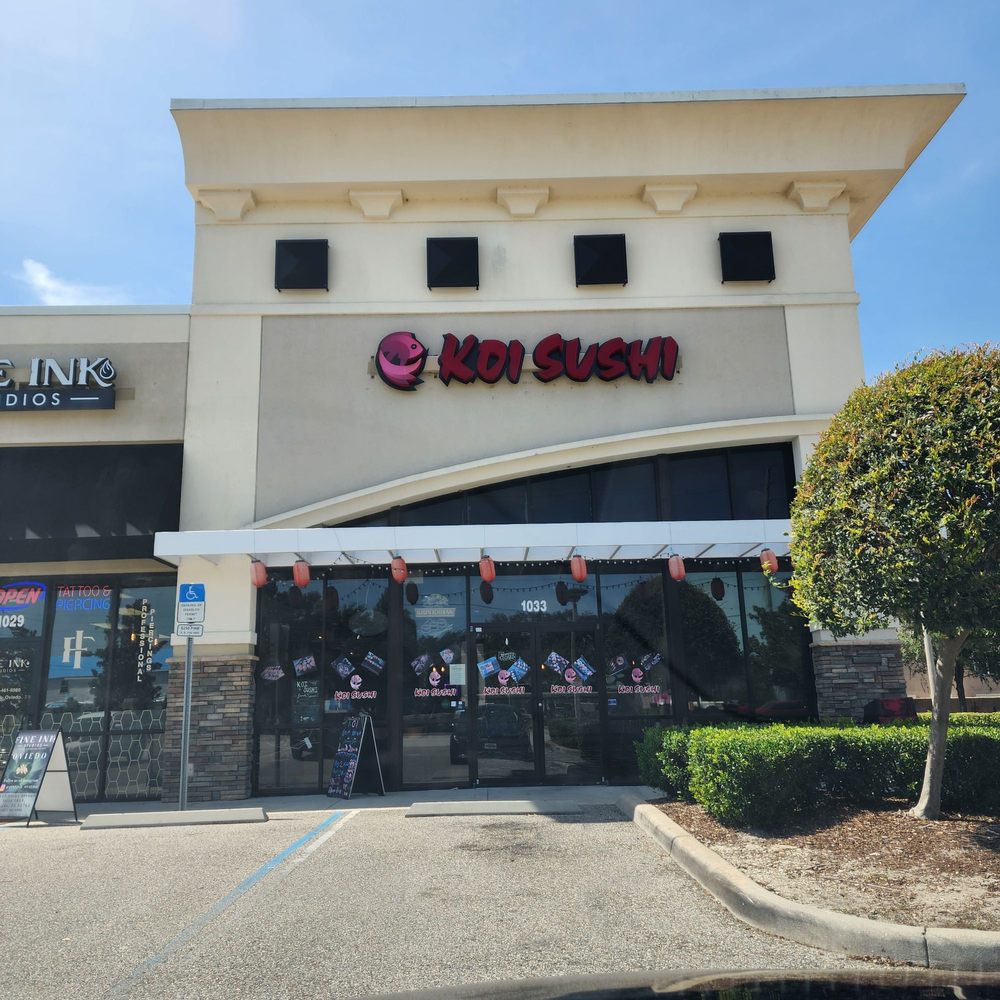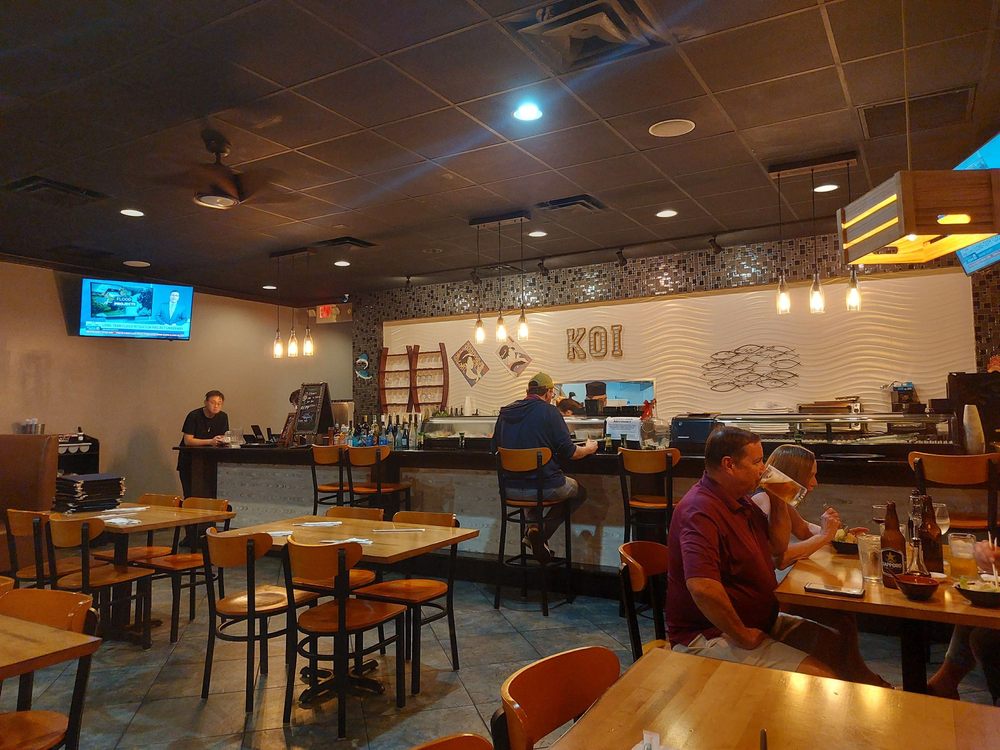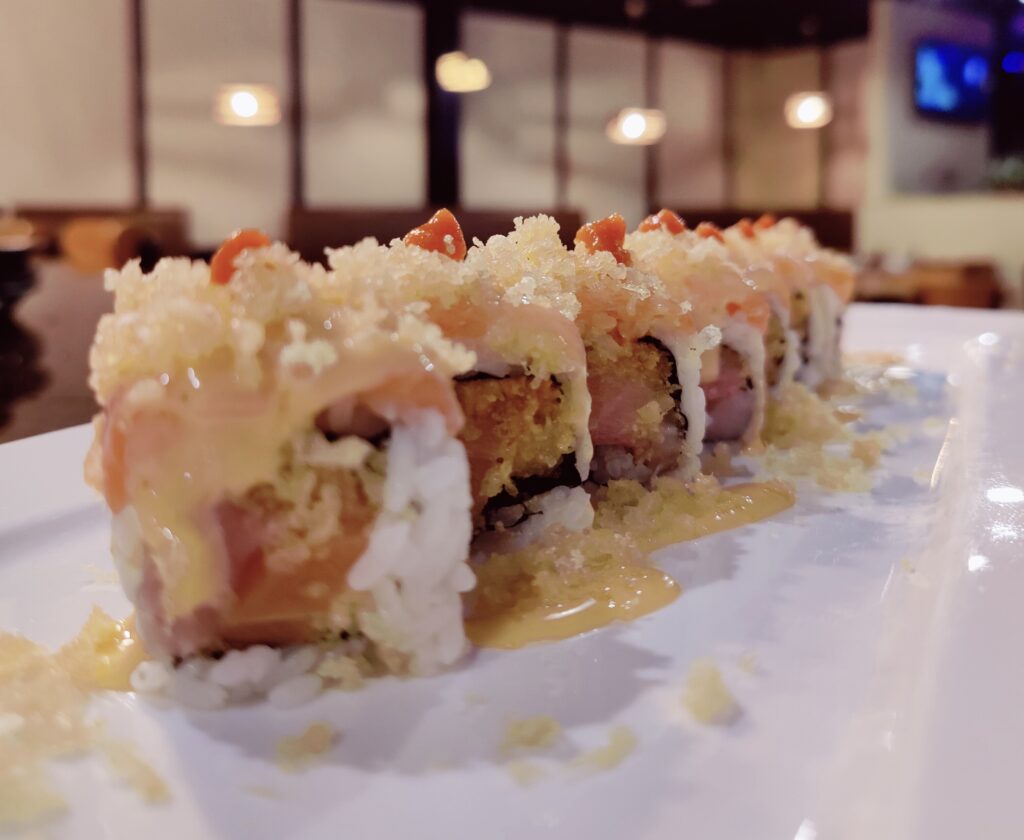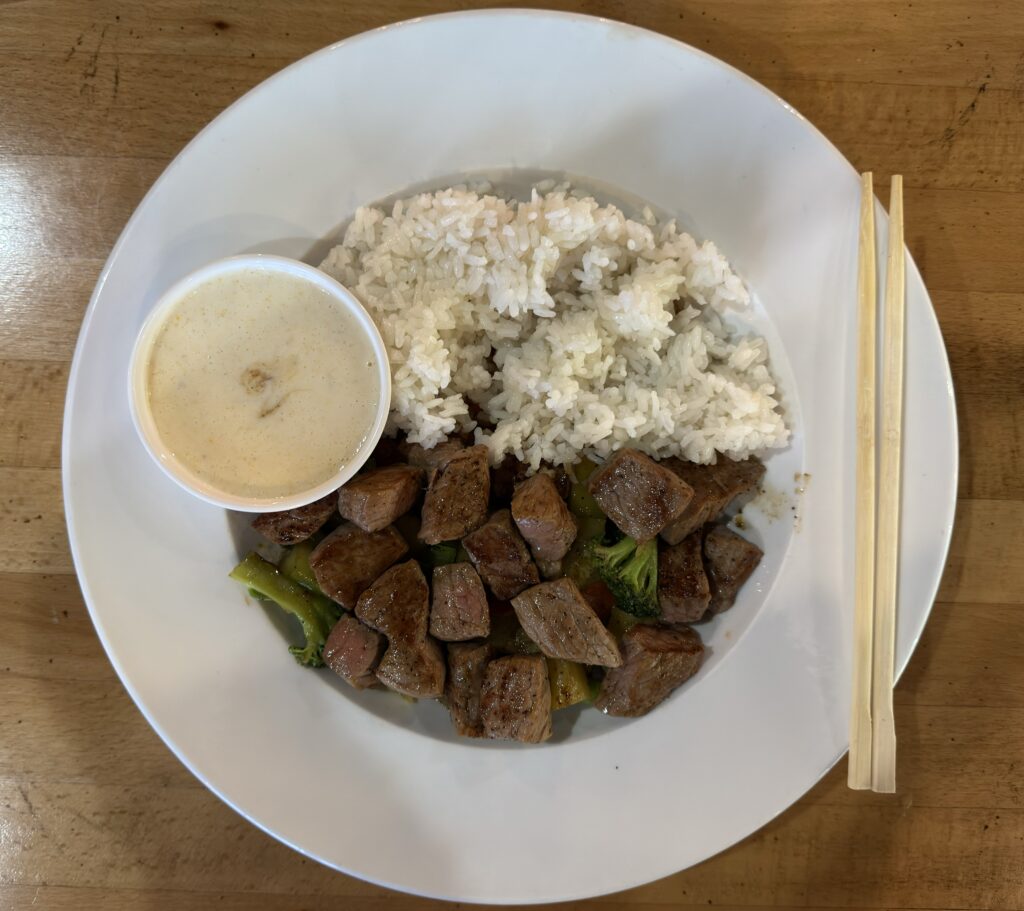Koi Sushi
The Corner Sushi Place
There’s this thing that happens when you’re in American suburbia. You’re driving down any strip mall-lined road in any mid-sized city and there it is: the neighborhood sushi spot. It’s not a michelin-grade omakase “experience” you encounter downtown, nor is it the grocery store California rolls. It’s the perfect inbetween. A place named either “Yuan Asian Cuisine” or in this case, Koi Sushi.

If you’re like most people, you’ve probably never thought twice about a spot like this. They’re just.. there. Reliable and tasty in the moment, but unremarkable.
What if I told you that these unremarkable places are actually doing something remarkable? That they’re quietly solving one of the most complex puzzles in American life: the balancing act between honoring where you came from and building something new where you are?
Nestled in between a Starbucks and Dunkin Donuts on Aloma Ave, Koi Sushi is probably exactly what you’re picturing right now. A small sitdown diner with a sushi bar at the back. However, if we just took a step back, we find that the restaurant is the shining exemplar of the space between—between cultures, between generations, between a life you planned and the life you’re living.
The Practical Dreamer
At Koi Sushi, we run into the owner—a cheerfully realistic man with an accent. At 28 years old, Yinghao Yu is doing something that his younger self never imagined. He’s running a sushi restaurant. Just three years ago, he was writing code. Now, he’s writing lunch specials on a whiteboard.
For Yinghao, the switch can be explained simply. “The easy answer is that the restaurant makes more money than [software engineering].”
But that’s not the entire story. The whole story starts with his parents—who came from the Fujian Province in China and did what a lot of Fujianese immigrants do—open restaurants. Not just one. Many.
“It’s a Fujianese thing. [My parents] prefer to own a restaurant or business. Local culture back home.”
So, when Yinghao’s parents wanted to open another restaurant, they needed somebody to run it. And Yinghao, watching his coding salary plateau while all his friends seemed to be doing the same thing, made a choice that surprised everybody, including himself.
Yet, the change Yinghao made is an oddly familiar one. What he’s doing—adapting his family’s knowledge to American expectations—is the immigrant story in miniature, played out through California rolls.

As the lunch rush quickly picks up, high school kids come in to order tuna rolls, teachers, bento boxes. Yinghao moves quickly around the restaurant—from the kitchen to the register with a practiced efficiency.
When asked if he misses his old life, he says this: “I like doing the same thing. Not having to change routines or schedule. Feels safe and comfortable.”
Safe and comfortable. Two things that, when you think about it, aren’t guaranteed in the immigrant experience. But Yinghao has found them in the most unlikely place: the space between his parent’s culture and his customer’s expectations.
But here’s what’s struck me about Yinghao: he doesn’t romanticize this decision. There’s no “following my passion” narrative or tone. It’s immigrant pragmatism at its finest—you do what works, and you make it work.
Now—for the food
As recommended, I placed an order of the Spicy Girl roll. Constructed with salmon and yellowtail (both spicy), tempura flakes, and a specialty house spicy sauce, the reason for its popularity became clear. Nothing about its flavor was understated. The salmon and yellowtail tasted remarkably fresh (practically melting in your mouth). And each roll was packed with vibrant flavors—a common trait shared by the exaggerated flavors found in American sushi. Savory fillings harmonizing with simplistic rice.
If you want to understand American sushi, you have to understand that it’s not really Japanese. It’s something else completely. A translation of a translation, adapted for American palates by Chinese and Korean immigrants who learned Japanese techniques and made them work for suburban strip malls.

“Sushi is Americanized. Adding cream cheese, deep-frying, all this would not happen in Japan. The flavor is heavier, sweeter, and saltier. Exaggerated.” Yinghao explains.

Additionally, I ordered a Steak Hibachi Dinner with the goal of exposing myself to the non-seafood selection. Straightforwardly set, the dish consisted of medium rare, lightly (black) peppered steak, on top of seasoned vegetables (carrots, onions, broccoli, zucchini), with a house sauce on the side. And to put it simply, the dish was spectacular. Delivered as advertised, and more. The steak was tender, but not a single piece was too chewy, and its seasoning, the pepper, contributed a lot. A perfect touch. Dipping the steak into the sauce was great: gingery, creamy but not too heavy, and savory. It’s these fun options that allow you to play around with your meal that make it just a bit more interesting. The vegetables underneath the steak were also great—offering a break from the protein-heavy meat cubes, providing my conscious with some excuse to feel healthier.
Closing remarks
After tonight’s dinner, I keep thinking about a specific thing that Yinghao said. He told me that running the restaurant has taught him communication, how to talk and listen, about “all aspects of life”. He’s gotten used to how people live, and he has the chance to talk to all sorts of people—a wider range than most of us.
Here’s a man who thought he was only switching careers, making a practical decision about finances. But what Yinghao actually did was become a translator. Not only of food, but of culture, the space between where he came from, and where his customers live their lives.
Even though many of these places appear to be innocuous—they’re doing something many of us often don’t realize. They’re not just feeding us—they’re teaching us a very important lesson: how to live together. How to take something completely foreign and make it familiar.
To create a community—one Spicy Girl roll at a time.
Ratings:
Quality: 18/20
Experience: 17/20
Food presentation: 9/10
Atmosphere: 10/10
Staff: 10/10
Side dishes: 9/10
Selection: 8/10
Pricing: 10/10
Flavor Forum Rating: 91/100
